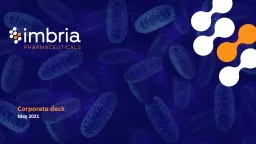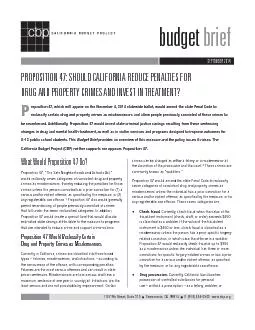PPT-Corporate deck May 2021 Imbria value proposition highlights
Author : BossCalling | Published Date : 2022-07-28
confidential 2 Ph2 clinical program with IMB101 in multiple indications with data read out in 202122 IMB101 is an NCE with allowed claims and priority date in 2017
Presentation Embed Code
Download Presentation
Download Presentation The PPT/PDF document "Corporate deck May 2021 Imbria value pro..." is the property of its rightful owner. Permission is granted to download and print the materials on this website for personal, non-commercial use only, and to display it on your personal computer provided you do not modify the materials and that you retain all copyright notices contained in the materials. By downloading content from our website, you accept the terms of this agreement.
Corporate deck May 2021 Imbria value proposition highlights: Transcript
Download Rules Of Document
"Corporate deck May 2021 Imbria value proposition highlights"The content belongs to its owner. You may download and print it for personal use, without modification, and keep all copyright notices. By downloading, you agree to these terms.
Related Documents














